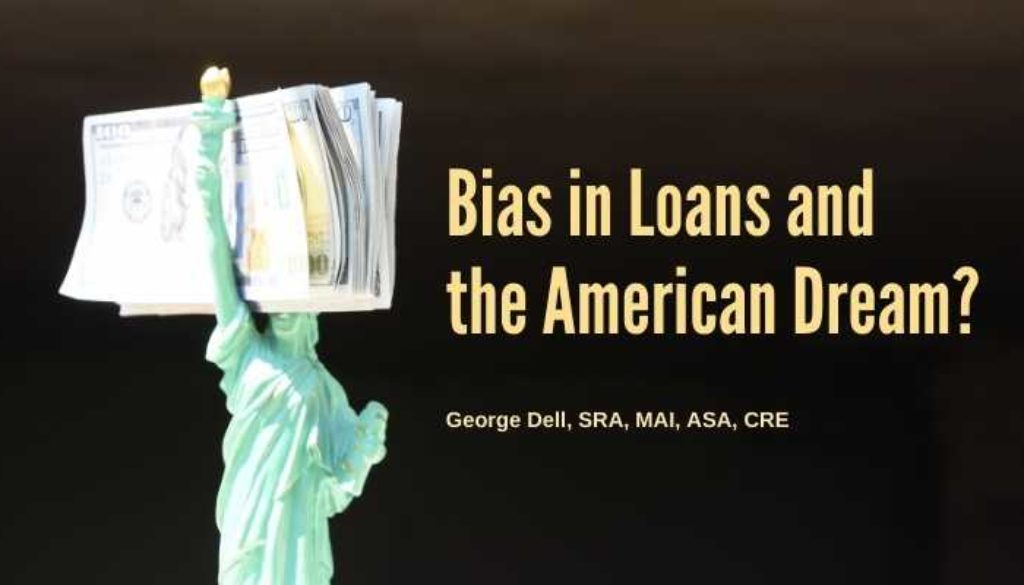Is there bias in the American Dream?
Do we need a “loan conditions” adjustment? Read this series here.
Loan conditions have nothing to do with ‘financing’ adjustments as we know them! One is local. The other is global. So how might loan conditions affect “market value”?
Financing conditions are often related to motivation in sale conditions. Market value can be reported in terms of cash, or “financial arrangements equivalent to cash.” Actual cash is cash. What is “equivalent” is iffy. Appraiser education generally says adjustments to cash are equivalent, by comparing non-equivalent (non-market) transactions to equivalent transactions. The words “non-market” financing are used several times in the Appraisal of Real Estate, 15th ed., p.381. The real issue here is that the term “non-market financing” is not defined. Nor is “market financing” defined. Dream
Market finance ‘value’ is determined by the interest rate, and risk.
For this conversation, we will define “market financing” as the level of interest and terms for which lenders are willing to lend for real estate purchases or refinances.
If we draw a parallel of loan market financing with the common definition of property market value, we must consider requirements. Loan buyer and seller are:
- prudent, knowledgeable, and well informed or well advised;
- not affected by undue stimulus;
- are typically motivated;
- unaffected by special or creative financing.
So let’s try this logic. Market values are real values only if loans are at “market finance” levels.
But market level financing is only ‘at market’ if it is unaffected by special or creative financing. But we all know that home financing is greatly affected by special financing. Financing created by, guaranteed by, or insured by government rules, laws, and institutions.
Effectively, we are ignoring true, real, fundamental, intrinsic value of a home as a place to live, to raise a family, to socialize, to feel safe. The affected market price is significantly exaggerated over real fundamental due to the affected market financing.
Market value, as defined, as regulated and supported — is biased. Market value is biased. It is biased because the underlying assumptions are ignored or twisted.
The upward bias continues to drive a wedge between the haves and have-nots. The haves have property, which continues to increase without providing additional labor or capital. The have-nots continue to have not.
The haves complain they cannot get their rightful money from the ‘subsidized’ property value inflation (by refinancing). The have-nots are finding it harder and harder to becomes “haves”. And the gulf gets wider.
Some call this the loss of the “American Dream”.
Which side of the gulf are you on?

March 24, 2021 @ 10:59 am
effective demand is like a pizza. there is only so much pie to go around. if a banker wants more money the borrower gets less money, but if the banker is willing to take a smaller slice you end up with a bigger pie that isn’t worth as much because no additional toppings are added. so, it’s nothing but cloaked inflation that actually puts more money in the banker’s pocket over the long term because the selling price is greater. So, loans are buy-assed .
April 11, 2021 @ 7:57 am
In the 80’s a mortgage banker told me there are 4 Cs in RE lending; Cash, Capacity, Credit and Collateral. Of course this is biased; its the U.S. system of real estate finance. It is a centralized system that has been both successful and with cyclical failures. It is subsidized with bailouts and benefits the lower risk “haves.” The GSEs do not want loan condition adjustment gumming-up a profitable process as they themselves influence the Capacity of borrowers to qualify with loan rates. What about countries where there is no standardized home loan system? Or better yet countries where title to property is not codified in law?